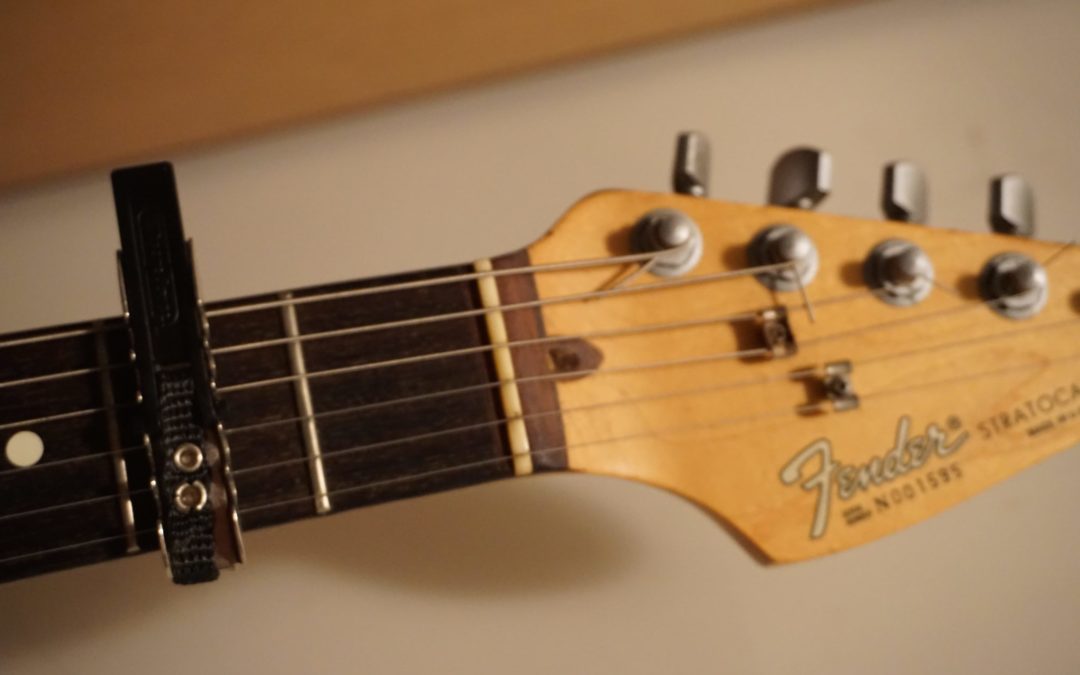Divisive comment alert: I love capos. They're awesome. Now there are many guitarists who believe that you shouldn't use capos but should just learn how to play the chords properly. They have a point, you SHOULD be expanding your knowledge of chords so that you can vary your sounds and aren't bound by limitations.
However, that kind of thinking will also make you miss out on the vast benefits capos do have to offer, such as:
1. Different tone
E sounds different when it's played as the low open chord as opposed to when it is played as a C while the capo is on the 4th fret. With the capo on, those higher sounds make it sound much sweeter, and also give more room for different kinds of embellishments. Whereas the E played lower has a much bigger, richer sound. Depending on how you want your song to sound, one of these will suit better.
2. Suiting a vocalist/songwriting
Generally the people who love capos the most are singer-songwriters. The capo is such a useful tool to take a song and move it to a key that is more suited for the voice.
In songwriting, I have found capos extremely useful when I write some chordal riff, but then the key doesn't really suit the vocals. In this case I can just move the capo and the guitar can work better around the vocals, the way it should, rather than vice versa.
3. More open strings
This is really what it's all about. If you're playing an F#, for example, you should be able to play it as a bar chord. BUT, it just sounds better as an E shape chord with the capo on the 2nd fret. On electric those open strings ring out and sound much bigger, while on acoustic they ring out and sound sweeter. Of course your finger has the ability to provide vibrato, but your finger just wont ring out as nice as that open sound. The guitar is made beautifully to do that (and so are capos), so get that guitar sound you paid so much for.
4. Unique riffs
Using a capo can also allow you to play riffs which may stretch out beyond what your hands could physically do. Sure, some of these riffs could possibly be transposed down to use open strings, but this may change the tone totally, let alone the fact that keys are generally not determined by what the guitarist wants to do.
5. Different Voicings
Let's look at two of our basic open chords, G and A. Both of these are major, however have different voicings. The A goes to the 5th from the bass, while the G goes to the 3rd. This creates a subtle difference, but the way the chord plays sounds different. Using a capo can help you more easily play the shapes with the voicings that you like, in the key you are wanting to play in.
6. Creative tricks.
One example of this is the half capo, which can essentially allow you to experiment and create new tunings with great ease. Much more experimentation can be done!
7. Transposition practice
This one is a bonus, but using a capo a lot forces you to get good at transposing chords or keys. If you're changing a song from being non-capo'd to using a capo, but trying to keep the same key, this forces you to think of which chords you need to use to replace them based on how far up the neck the capo is.
For example, if you were playing G, D, Em, C without a capo but wanted to capo fret 7, to keep the same key you would change that to C, G, Am, F
Also, it makes you become more familiar with the different parts of the fretboard.
Hope your love for capos has grown or your disdain has withered. Either way, these little devices really do belong in the category of essentials for guitarists.
Don't forget to comment, subscribe and contact us for any lesson enquiries. We have an awesome new teacher on board. Very talented guitarist and good friend of mine Ric Newsom. Check him out.
Paul
TMTG

